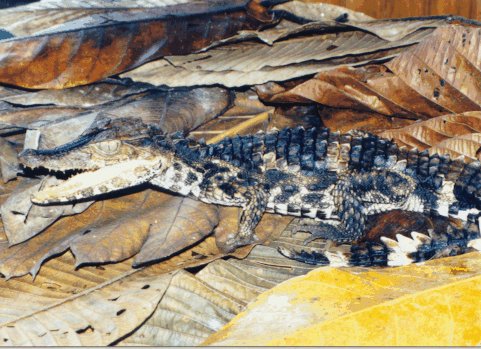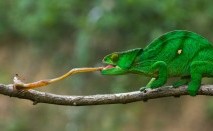
Category: Reptiles

Also known as the smooth-fronted caiman, these reptiles are the second-smallest crocodilian. They are native to the Amazon and Orinoco Basins in South America. They are an elusive species that usually hides in burrows during the day and rarely basks in the sun. Their nests are often built near termite mounds - the caiman’s clutch eggs are incubated by metabolic heat from the termites as well as any decaying vegetation that is present.
https://en.wikipedia.org/wiki/Smooth-fronted_caiman

The Tongue-tastic Chameleon
The Chameleon is known for its ability to change colors, but that is not the only amazing feature they possess. Chameleon tongues are twice the length of their bodies (can you imagine having a 10-12 foot long tongue?) and they use it for hunting! When it sees a tasty bug, the chameleon coils the muscles in its tongue in much the same way a hunter tightens the string on their bow, then the tongue shoots out, striking with incredible speed, sticking to the hapless insect as it is dragged back to the chameleon’s mouth. And believe it or not, smaller chamelons are sometimes even stronger and faster than their larger cousins: the tiny Rhampholeon spinosus’s tongue accelerates at a rate equivalent to your car going from 0-60 miles per hour in 1/100 of a second, and it rarely misses its target!
Learn more >>
 Discover Animals is a web-based educational resource offered by the NAIA
Discover Animals is a web-based educational resource offered by the NAIA